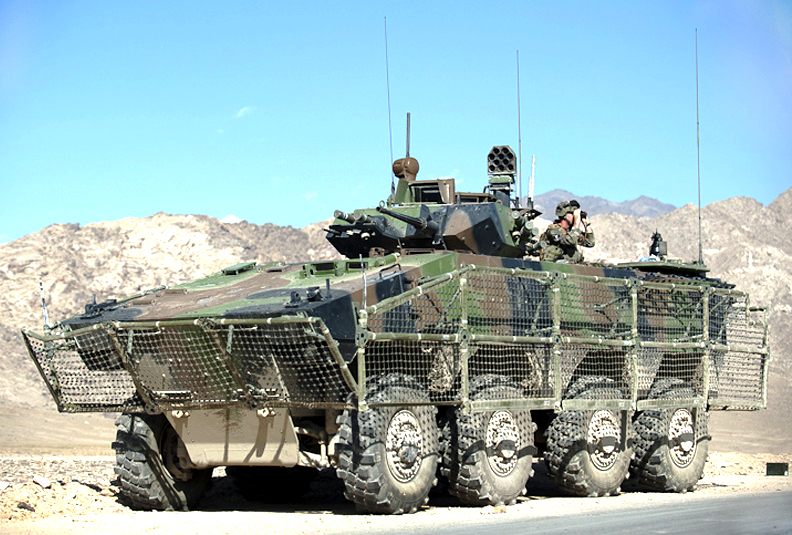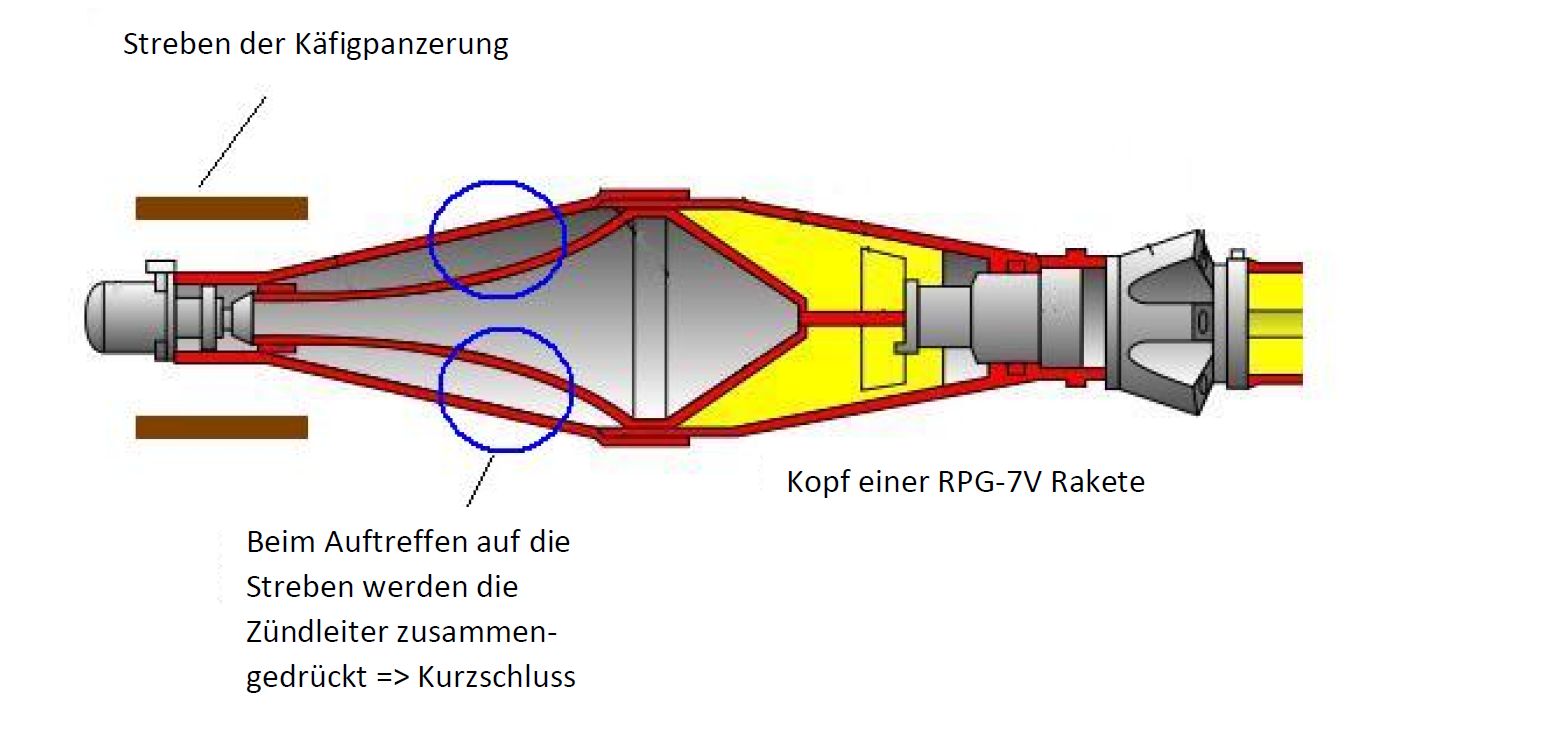Get the weekly SPARTANAT newsletter.
Your bonus: the free E-Book from SPARTANAT.

Cage armor against RPG-7
Pretty much everyone knows the pictures of vehicles in combat and crisis areas with cage armor. This is designed to protect against shaped charges, especially those of the widespread RPG-7. We have summarized how this works and what problems are associated with it:
The principle of cage armor is simple: The rocket approaches and is compressed in front through the impact on the metal struts before it hits the vehicle, causing a short circuit inside the "ignition cables" and preventing the shaped charge from detonating upon impact. An extremely simple and effective concept, which is quite heavy and also suffers from the fact that the warheads of the RPG-7 (PG-7) with shaped charges have diameters between 70 and 94mm depending on the manufacturer and type.
 Therefore, in the USA, the so-called Q-Net (shown in French use in Mali) was developed, a combination of struts and nets that is much lighter and more effective than the complete strut cage. But not only does the armor evolve, so does the PG-7. It happens that a rod is mounted on the impact fuse so that the shaped charge can be triggered before the struts/nets can short-circuit it.
Therefore, in the USA, the so-called Q-Net (shown in French use in Mali) was developed, a combination of struts and nets that is much lighter and more effective than the complete strut cage. But not only does the armor evolve, so does the PG-7. It happens that a rod is mounted on the impact fuse so that the shaped charge can be triggered before the struts/nets can short-circuit it.
Another problem is tandem shaped charges, like the improved Egyptian Cobra in the image above. Here, the fuse was moved to a thinner tip at the front and the space was used to accommodate a small second shaped charge (which improves effectiveness against reactive armor).
But what current cage systems mostly bypass are PG-7 warheads that have insulated "ignition cables" (or a resistant plastic between them). This prevents a short circuit from occurring due to deformation. Such improved warheads have been in production since 2012.
SPARTANAT is the online magazine for Military News, Tactical Life, Gear & Reviews.
Send us your news: [email protected]
Ad
similar
Get the weekly SPARTANAT newsletter.
Your bonus: the free E-Book from SPARTANAT.


